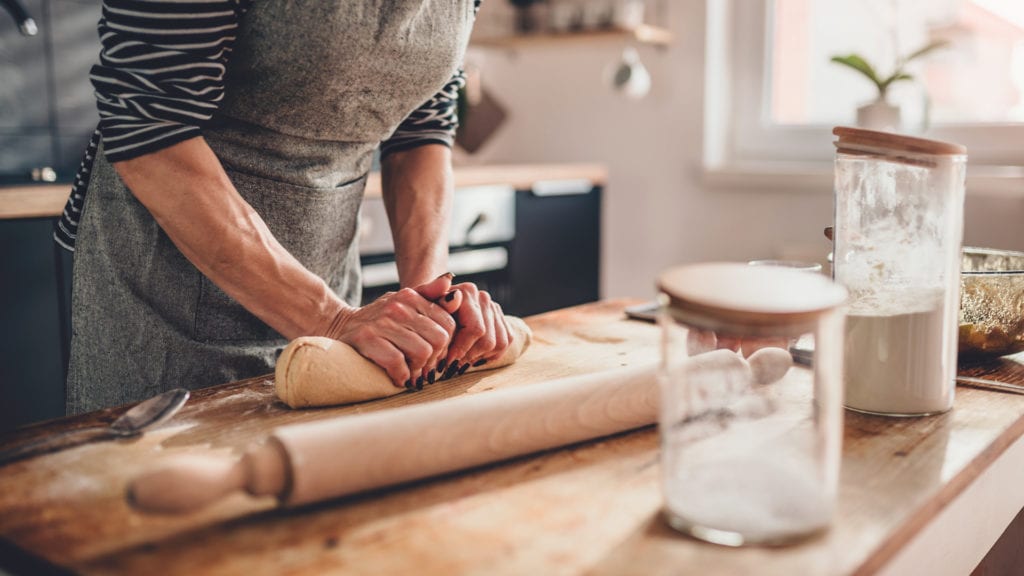The world is changing. We’re teaching our grandparents how to use Zoom; we’re filming countless attempts of Drake’s “Toosie Slide” for our TikTok accounts, and we’re replacing Hockey Night in Canada—a Saturday evening tradition since 1952—with sourdough bread baking.

It may be fascinating to follow changes in consumer behaviour during the global pandemic, but these changes have also become a lifeline for some businesses to stay afloat. Brands are pushing creative boundaries to connect with their communities in different ways that will be remembered post-pandemic. For example, if it weren’t for COVID-19, would Disney have donated its extra food to those in need? Would Bud Light have streamed home concerts? Maybe. Maybe not. What we can say for sure is that companies are under even more of a microscope during COVID-19 to avoid sharing messaging that is insensitive, impractical or self-serving.
Canadiana Forever
I work in Ketchum’s Toronto office. Interestingly, it turns out that there’s no better time for Canadians to promote our well-known culture of ice hockey and togetherness, but that’s nothing to be sorry about. The City of Toronto recently gained social traction after posting signage comparing the required two-metre physical distance to “about the length of a hockey stick.” In attempts to connect with consumers in new ways, Canadian fashion brands have become involved in COVID-19 efforts, with Ardene donating more than 30,000 pairs of shoes to medical workers and Aritzia announcing that all profits during the outbreak will go to the Aritzia Community™ Relief Fund to support its people and their families.
While Canadians look to news media for the most accurate information during the global pandemic, we are turning to social media for a positive sense of community—a trend we aren’t used to seeing as often. As of April 15th, or #TakeoutDay, Canadians are encouraged to order takeout from their favourite local restaurants to support an impacted industry that employs millions.
Community, Not Competition
If you watch the news every day, it’s easy to overlook positive change these days. Pre-pandemic, there was a notion that social media was a negative contributor to mental health and an outlet for unrealistic portrayals of our day-to-day lives. We even saw users admit to needing to step away from their accounts with hundreds of thousands of #DigitalDetox posts in 2019 alone.
While physical distancing, it is no surprise that social media usage has increased. Popular platforms like Facebook, YouTube, Snapchat, Twitter and LinkedIn have all reported significant usage increases—people are hungry to stay connected with the outside world. And the work from home community is no exception. Our Canadian team has truly embraced the video-call culture, hosting a virtual Battle of the Quaranteams (a.k.a. trivia), Name that Quarantune! (leading to some impromptu karaoke) and an upcoming guided meditation.
The key is not the change in usage, but rather, the shift in content themes and users’ willingness to be vulnerable. What was once a highlight reel has transformed into a safe space and seemingly positive escape from reality. Even from personal experience, travel envy is no longer what sparks thumb-stopping content.
Uncovering New Trends for Engagement
The way we engage online has also changed, making it increasingly important for brands to understand how emerging social media trends may work in their favour. Across social platforms, we’ve seen an influx in video and live streaming, for example—the number of U.S. users watching live video on Facebook has increased 50% since January alone. For corporate clients, sharing a video message with employees may be an appropriate action to leverage the community’s interest in video content, but also ensure that senior leadership’s personal touch is not lost while working remotely.
For DIYers, Pinterest continues to make improvements to users’ shopping experience as the platform has seen a 44% YoY increase in Pinners engaging with shopping features. Like me, Pinners are searching for creative recipes involving flour, like salty croissants and Australian damper bread, but there’s also been a spike in searching for encouraging words such as “check on your friends quotes” (+300% in Canada) and “family quotes about strength in hard times” (+1863% in the U.S.). Comfort from our social media accounts is boundaryless.
Around the globe, content creators who are tapping into the “new now” are keeping their followers more engaged and using Instagram as a uniting force for good. We are seeing creators influence their audience in a refreshing way: through authentic stories from home. From comical parenting adjustments in homeschooling, to tear-jerking confessions of family illness, these are the creators we’ll remember post-pandemic.
By following these trends, we’ve helped our clients adapt their social strategy to put a focus on community. Rather than leverage COVID-19 to promote itself as a supplier of personal protective equipment, our Wajax client pivoted its content plan to share health and safety precautions for employees, vendors and customers. This was in addition to organizing a large donation to frontline workers—content that quickly became its most engaged piece last month.
For many, social media has finally shifted into what we were hoping it would become one day—more real. We see you, and we thank you.



